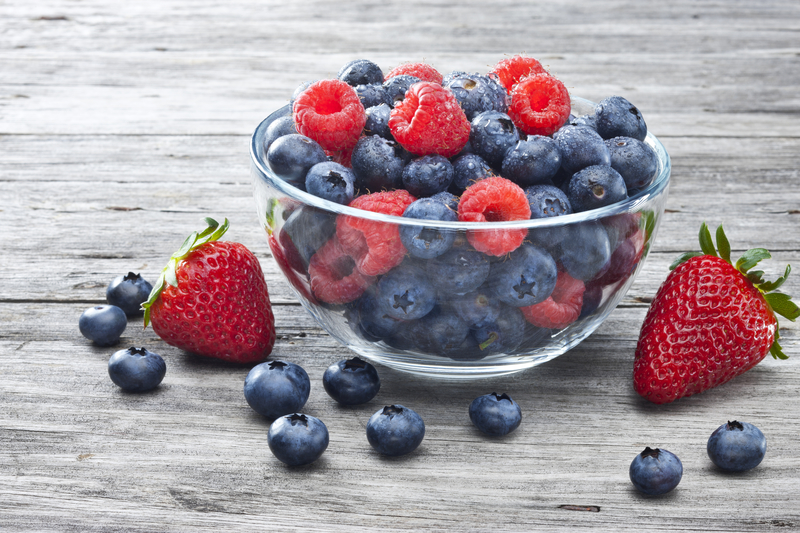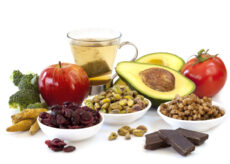See the 7 Bodily Signs You’re Not Getting Enough Fiber

Are you consuming enough fiber? Chances are, even if you eat healthy, the answer is, “Not even close!” And it can be even worse for people who rely on processed, convenience, or fast foods; those who are into “juicing”; and those on a low-carbohydrate diet.
Why Do We Need Fiber?
Yet fiber is not just healthy, it’s essential. After all…
- It keeps our digestive systems moving smoothly
- It keeps us regular
- It helps fill us up and keeps us feeling satisfied after meals
- It helps support normal blood sugar metabolism (i.e., helps prevent blood sugar spikes and subsequent crashes)
- It supports weight loss (and can help prevent weight gain)
- It supports healthy cholesterol levels, promotes heart health, and helps prevent heart disease and strokes
- Certain fibers even support a healthy balance of gut microbes
- And it’s so good for our overall health and for decreasing the risk of disease, including certain types of cancer.
How much fiber do you need? The American Heart Association (and other health orgs like the Institute of Medicine) recommend 21 to 25 grams per day for women under 50 years old and 30 to 38 grams per day for men under 50. Yet the average adult gets only about 16 grams per day.
7 Bodily Signs You’re Not Getting Enough Fiber
Looking at the benefits of eating enough fiber can provide some good clues on what types of symptoms you could experience if you don’t eat enough fiber. These include:
1. Bloating and Constipation
Because fiber adds bulk, as long as you’re also getting enough water, everything can come out more smoothly. So, one of the first things folks notice when not getting enough fiber is that they’re less regular and may have a harder time evacuating the GI tract. They may also notice their poops are harder and smaller. Having said that, it’s not abnormal to experience some bloating when ramping up fiber intake. (That’s a normal result of gut microbes feeding on the fibers.) In other words, increase fiber intake slowly and mindfully; just because a food is “healthy” doesn’t mean it’s right for you.
2. Energy Fluctuation
Poor blood sugar control can result in a spike, followed by a crash, in energy—especially when people consume refined carbohydrates (such as sugars and fast-digesting refined flours). Fiber slows digestion, so the body can better respond to carbohydrate consumption with more stable blood sugar, and thus energy, levels. This can also help you better maintain insulin levels, stabilize your mood, and even help you maintain or lose weight.
3. Increased Hunger
Do you often feel hungry even though you just ate a little while ago? It could be because you aren’t eating enough fiber. Because fiber is a satiating food, it can give you that full feeling for a longer period of time, so you aren’t reaching for a little something to tide you over long before your next meal (or even right after you just finished eating). And again, fiber can also stabilize blood sugar levels, which can help decrease food cravings.
4. Foggy Thinking
If you’re feeling hungry and your energy levels are crashing, how easy will it be to stay focused and concentrate on the task at hand? Not easy at all! Ensuring you’re satiated (and not distracted with a hangry belly) and your energy is stable can help clear the clouds, so you can stay focused and productive.
5. Weight Gain
By helping control those hunger levels, keeping blood sugar stable, and keeping you full longer, increasing your fiber intake may even help you avoid weight gain or help you lose weight by helping you eat less. Seeking out fiber-rich foods can also help you avoid processed foods that tend to be low in fiber, so you’re more likely to eat wholesome, healthy foods instead of junk.
6. High Blood Fats
When it comes to heart health, most of us understand that we don’t want our blood fats—like cholesterol and triglycerides—getting out of whack. Fiber, especially soluble fiber, can help “trap” these fats, reduce their absorption in the bloodstream, and instead, help direct them out of the body, which can help improve cholesterol levels, lower triglycerides, lower blood pressure, and support heart health.
7. Breakouts
The skin can often mirror what’s going on inside the body. According to some experts, breakouts can indicate higher levels of potentially toxic compounds. Increased fiber intake combined with better hydration may help support the body’s detoxification pathways, so toxicants are excreted through the bowel rather than through the skin. Although more studies are needed, this may lead to healthier-looking, smoother skin with decreased acne.
How Can You Get More Fiber?
To keep it simple, the best way to increase your fiber intake is to ensure you’re eating healthy high-fiber foods in their whole forms. Fruits (including avocado and tomato), vegetables, beans and legumes, whole grains (like quinoa, oats, and even popcorn), and nuts and seeds (like almonds and chia seeds) are all rich sources. Eat a wide variety of fiber-rich foods to keep your body filled up and running smoothly!
However, if you have been neglecting your fiber intake, don’t move too fast. Instead, start to slowly increase your fiber intake. Otherwise, you will experience unwanted side effects like feeling gassy and bloated.
In addition, some people are more sensitive to the effects of fiber (e.g., folks with IBS), so watch your body and how it responds to your increased fiber intake and adjust accordingly. And don’t forget to drink plenty of water as well.
Can You Eat Too Much Fiber?
You can definitely eat too much fiber, though it’s much less likely. Some signs your body is telling you to back off and eat less (or at least slow down) include gas, bloating, constipation, diarrhea, gut cramping, and symptoms similar to the stomach flu.
Another issue is that fiber can bind to minerals (like calcium, iron, and zinc), inhibiting their absorption, so remember to keep it all in balance and shoot for the recommended amount of fiber for you rather than trying to consume as much fiber as possible.
Low Fiber Symptoms: A Wrap Up
If you’re like most Americans, you may have found it to be difficult to get enough fiber and suffered the consequences. Fortunately, by just slightly changing your diet and slowly adding one more high-fiber food to your diet every few days or weeks, you can get caught up and enjoy all the benefits that come with eating just the right amount of fiber for you.




 7 Signs Your Body is Seriously Low on Collagen (not just wrinkles)
7 Signs Your Body is Seriously Low on Collagen (not just wrinkles) Health Expert: "Turmeric Doesn't Work (unless...)"
Health Expert: "Turmeric Doesn't Work (unless...)" 3 Warning Signs Your Probiotic Supplement is a Total Waste
3 Warning Signs Your Probiotic Supplement is a Total Waste

